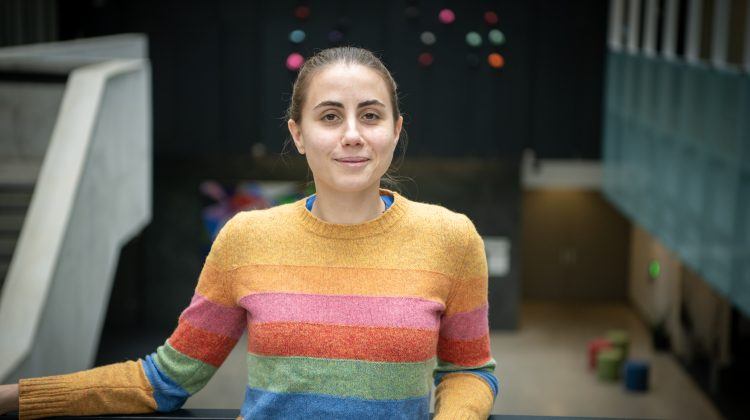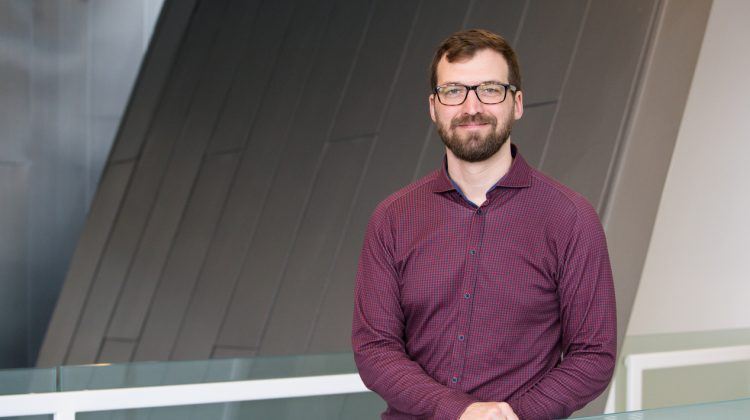A new golden age
A hundred years ago in Berlin, Albert Einstein finally homed in on the definitive version of general relativity, his spectacular explanation of the law of gravity.
The full drama and the manuscript Einstein submitted on November 25, 1915 are beautifully presented in Hanoch Gutfreund and Jürgen Renn’s new book, The Road to Relativity. There was even a race with the world’s top mathematician, David Hilbert, but Einstein somehow got there first: as Hilbert’s paper says, “The differential equations of gravitation that result here are, as it seems to me, in agreement with the magnificent theory of general relativity established by Einstein.”
Einstein’s theory transformed our understanding of space, time, and the universe. But his theory was only the beginning. Relativity has been an engine of discovery as physicists have explored the host of phenomena which it allows and describes – ranging from black holes to dark energy and the expanding universe. Just as important, quantum mechanics – the other great pillar of 20th century physics – is at odds with general relativity, and the tension between the two continues to drive fundamental physics today.
We physicists have a funny way of showing our love for a great theory: we do our best to overthrow it. We are delighted when it works, as we expect relativity will when the Event Horizon Telescope reveals the structure of the black hole in our Milky Way, or LIGO detects the gravitational waves emitted when two black holes merge. Both developments are expected in the near future.
But we are even more delighted when a theory reveals its cracks and flaws, because these are indications of new physics still to be discovered. For all its elegance and power, general relativity is not the final theory of the universe. We know it fails at the big bang and inside black holes. In reconciling it with quantum theory, we hope to make the next great leap forward.
Thus we are not celebrating the 100th anniversary of this perfect diamond of a theory; rather, we are celebrating 100 years of pushing it to the limit. For 100 years, general relativity has prevailed in test after test, on Earth, in the solar system, and beyond – to the entire visible universe. But we are now pushing it even further, towards describing the big bang itself, the most violent astrophysical phenomena, the largest and the smallest distances ever probed. At the same time, new mathematical connections between quantum gravity and quantum fields are emerging, taking us beyond traditional approaches and providing clues to new theories.
In seeking new physics, the universe around us is always our best guide. The puzzles it presses upon us are the best clues to new theories. In the 1960s, particle physicists found that the number of neutrinos coming from the sun did not match the number predicted by the prevailing theory. Neutrinos are very hard to detect, so, for a while, many dismissed the “solar neutrino puzzle” as a possible experimental error. But as time went on, and the puzzle was confirmed by other experiments, it became harder to ignore. So physicists set out to explain it.
Here in Canada, it was tackled at the Sudbury Neutrino Observatory (SNO), an ingenious experiment led by Art McDonald. When I joined the faculty at Princeton in 1988, I just missed him: Art had just moved to Canada. But I used to frequently hear his name (in reverence!) and wondered who he was. Twenty years later, when I moved to Canada, I finally met Art at Queen’s University. A couple of years later, in 2011, we were delighted to welcome Art to Perimeter’s Board of Directors. Art had shown amazing entrepreneurship in returning to Canada to design and build the world’s top experimental laboratory for neutrinos, in a nickel mine in Sudbury, Ontario. Somehow, Art persuaded the Canadian nuclear agency to loan him a huge supply of heavy water as a target for the neutrinos, and to guarantee them and the insurers that it would be safe in his hands! SNO ultimately resolved the solar neutrino puzzle by showing that neutrinos change from one “flavour” to another as they travel to Earth. This mixing of flavours demonstrates that neutrinos have a tiny mass, and the best explanation involves physics at enormous energies, close to those where quantum gravity is important. So the SNO finding is another great clue to the physics beyond Einstein’s theory.
We were thrilled when we heard Art had been co-awarded the 2015 Nobel Prize and were delighted to be able to celebrate with him in person a few weeks later. In every conversation or email exchange we’ve had, the first thing he says is that the Nobel is not for him, but for the team he led – specially the hundreds of students who were trained on the experiment, which ran for years and has now grown into a scientific powerhouse, SNOLAB.
Art is, of course, modest and Canadian – but he is also right. Great science is almost always a team effort. At the end of the opening paragraph of his great paper on general relativity, Einstein says, “I want to acknowledge gratefully my friend, the mathematician Grossmann, [who] helped me in my search for the field equations of gravitation.” Even developing the most abstract theory can be, and benefits from being, a very social activity.
Indeed, a beautiful illustration of this came almost immediately after Einstein presented his theory of general relativity. Trying to understand mathematically how gravitation was compatible with the conservation of energy, David Hilbert invited a promising young mathematician, Emmy Noether, to help work through the knots. In the course of doing so, she achieved a breakthrough of her own. Noether’s theorem, which states that for every symmetry in nature there is a conservation law, is now part of the bedrock of physics.
(If you’re never heard of Noether, by the way, you’re not alone. Despite the fact that it’s hard to imagine modern physics without her, she is not a well-known historical figure, nor did she get the respect she deserved in her lifetime. Perimeter’s efforts to change the way women are treated in physics are named after her for a good reason.)
Here at Perimeter, we have an extraordinary challenge, as well as an exceptional chance: to develop the ideas that will reshape our understanding of the universe, just as Einstein did. Bold as this mission may be, there has never been a better time. We are living in a golden age of data, from the Large Hadron Collider to the Planck Satellite, and an abundance of experiments in between. Information is being gathered at an unprecedented pace. What it is revealing is a universe with astonishing, although deeply puzzling, simplicity. A universe requiring new principles of physics.
– Neil Turok is Director of Perimeter Institute.
























































































